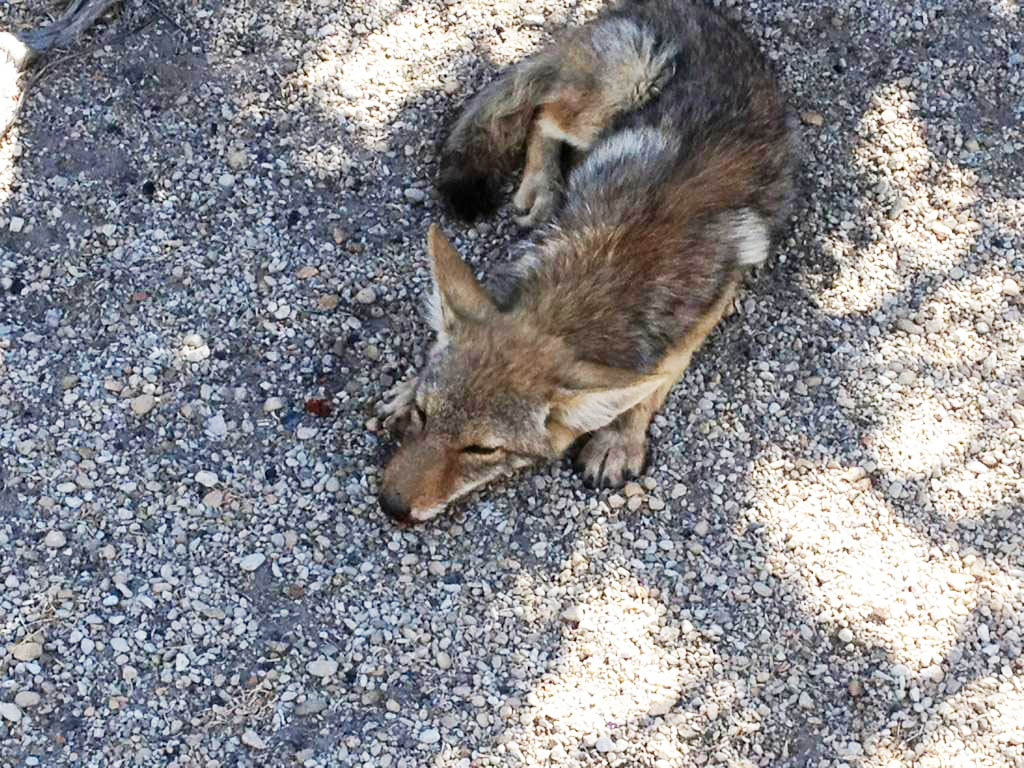This young coyote was found with a leg injury on the side of the road and brought to our rehab, where he was treated and released.
Vehicles are the greatest single cause of injuries to wildlife.
More than a million wild animals are killed on roads and highways every day of the year. Many more are injured. We’re not going to give up our cars and trucks but we can do some things to help prevent birds and mammals from being hit by them.
Remember that our wild neighbors also need to use and cross roads. Many birds and mammals hunt and forage along roads and highways. Stay alert and watch ahead for birds or mammals in the road. Slow down and give them time to get away. Don’t assume that birds will “always fly away.”
A high percentage of wildlife hit by vehicles are feeding on roadkill. You can help by removing roadkill from traffic lanes and shoulders. Be sure that you are safe while doing so.
Certain places attract wildlife. Notice those places on your regular driving routes where streams cross under the highway or where you have seen raptors perching or deer grazing. Pay attention, especially near dusk and dawn.Deer crossing signs mean just that. They are placed where it is known that the animals often cross the road. Activity will increase during spring or fall when the deer are moving up or down slope. Near dusk and dawn are the most critical time for deer and elk. Be alert: hitting a deer can be dangerous for you as well as the deer.
Many thousands of wild animals hit by cars are brought to wildlife rehab centers each year. Many of them can be helped.

